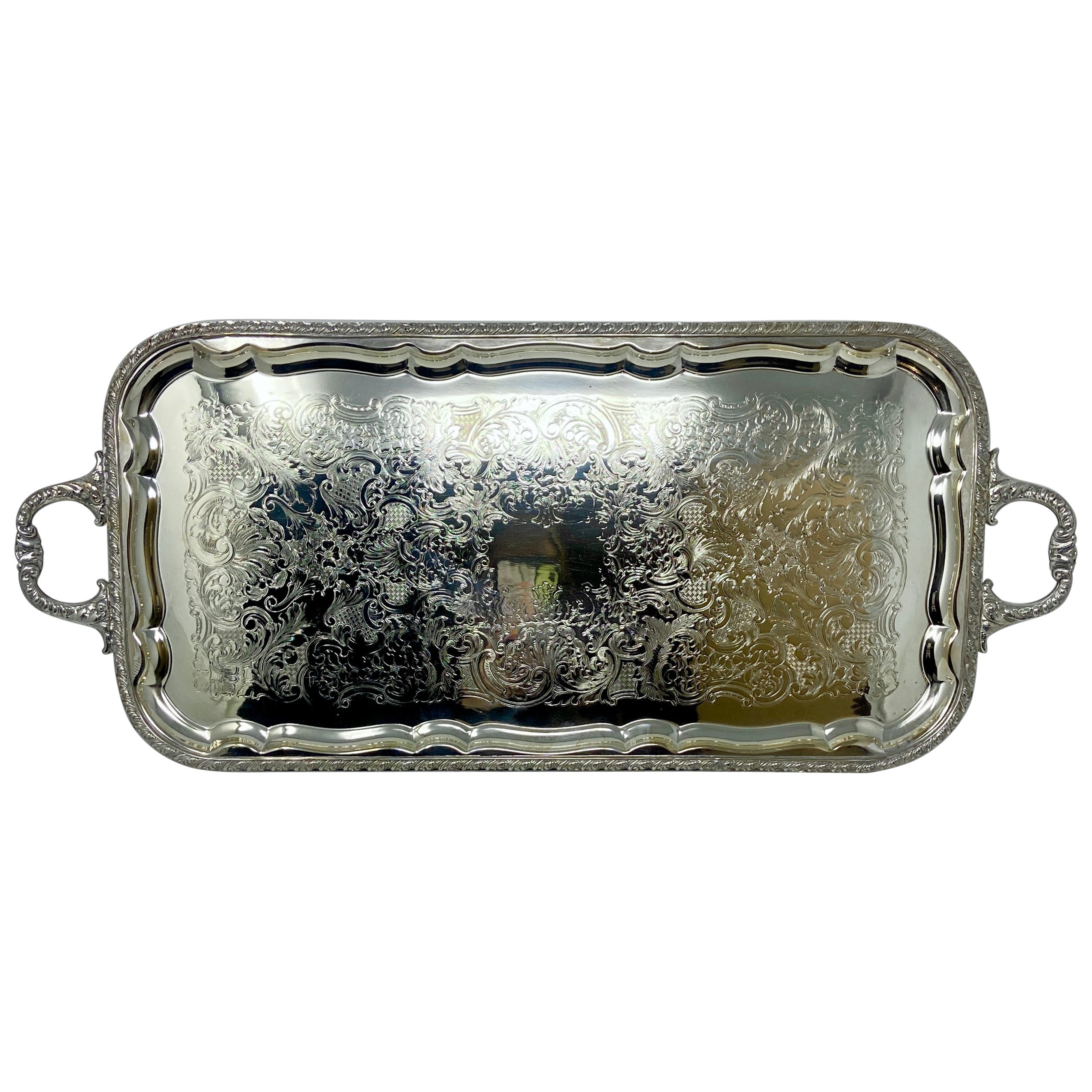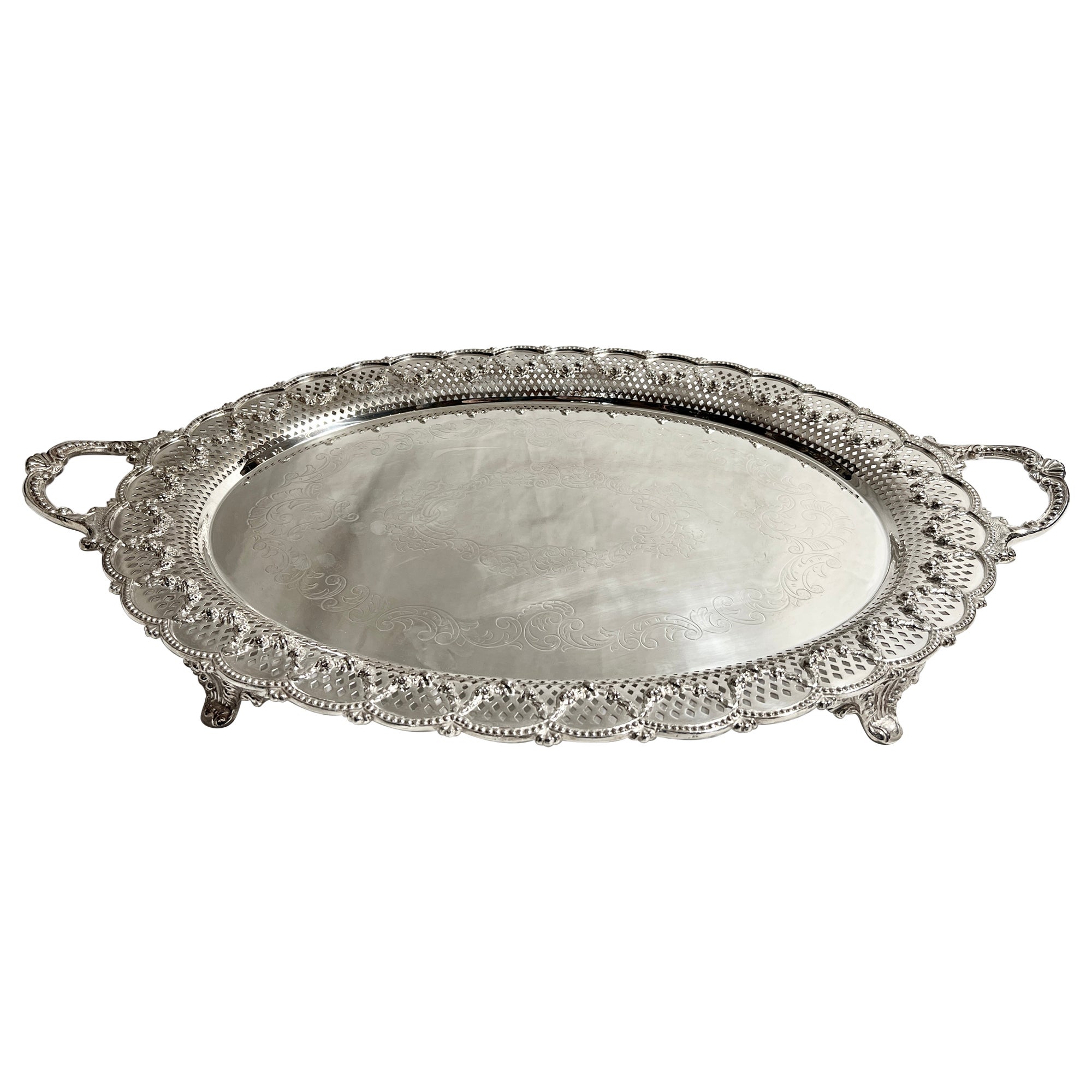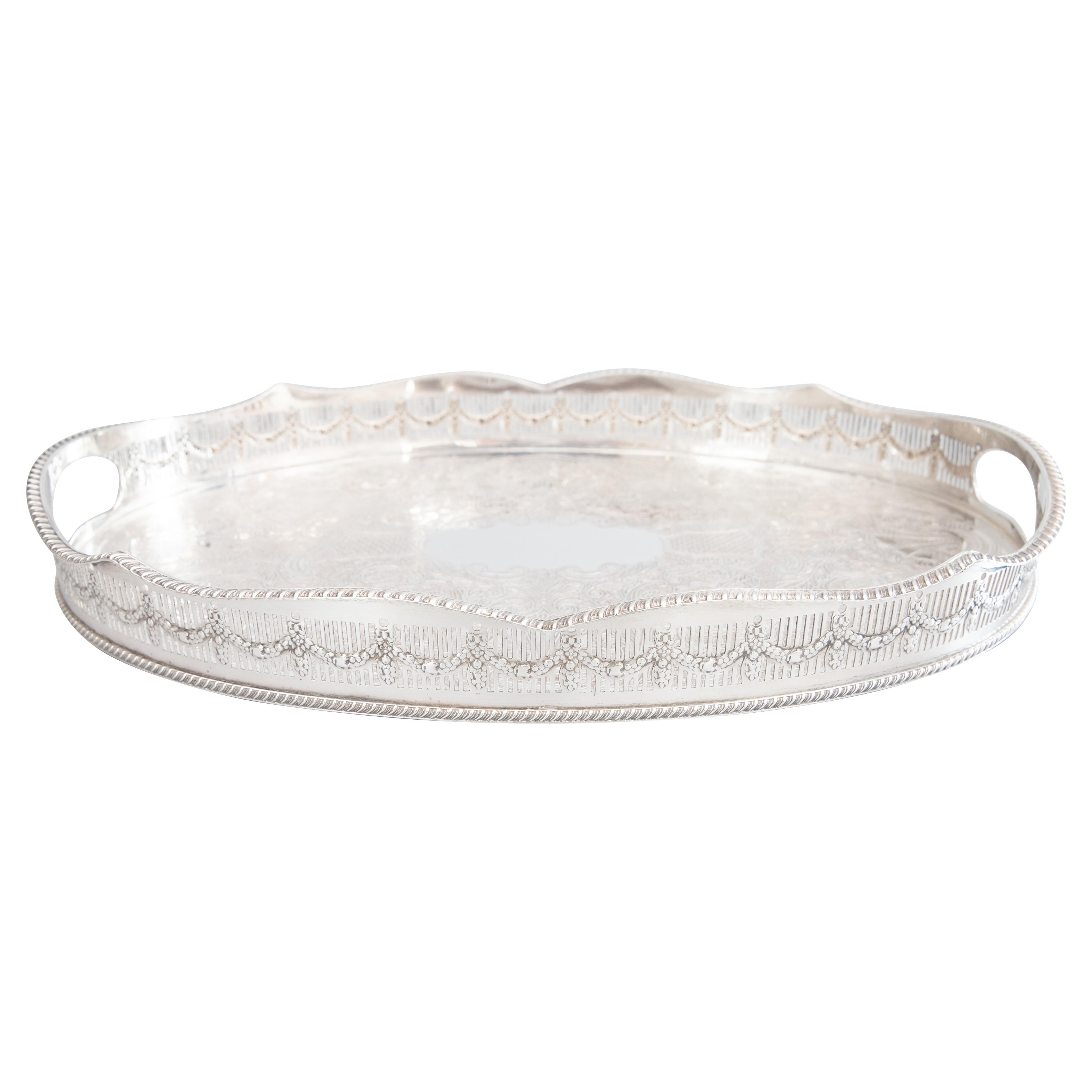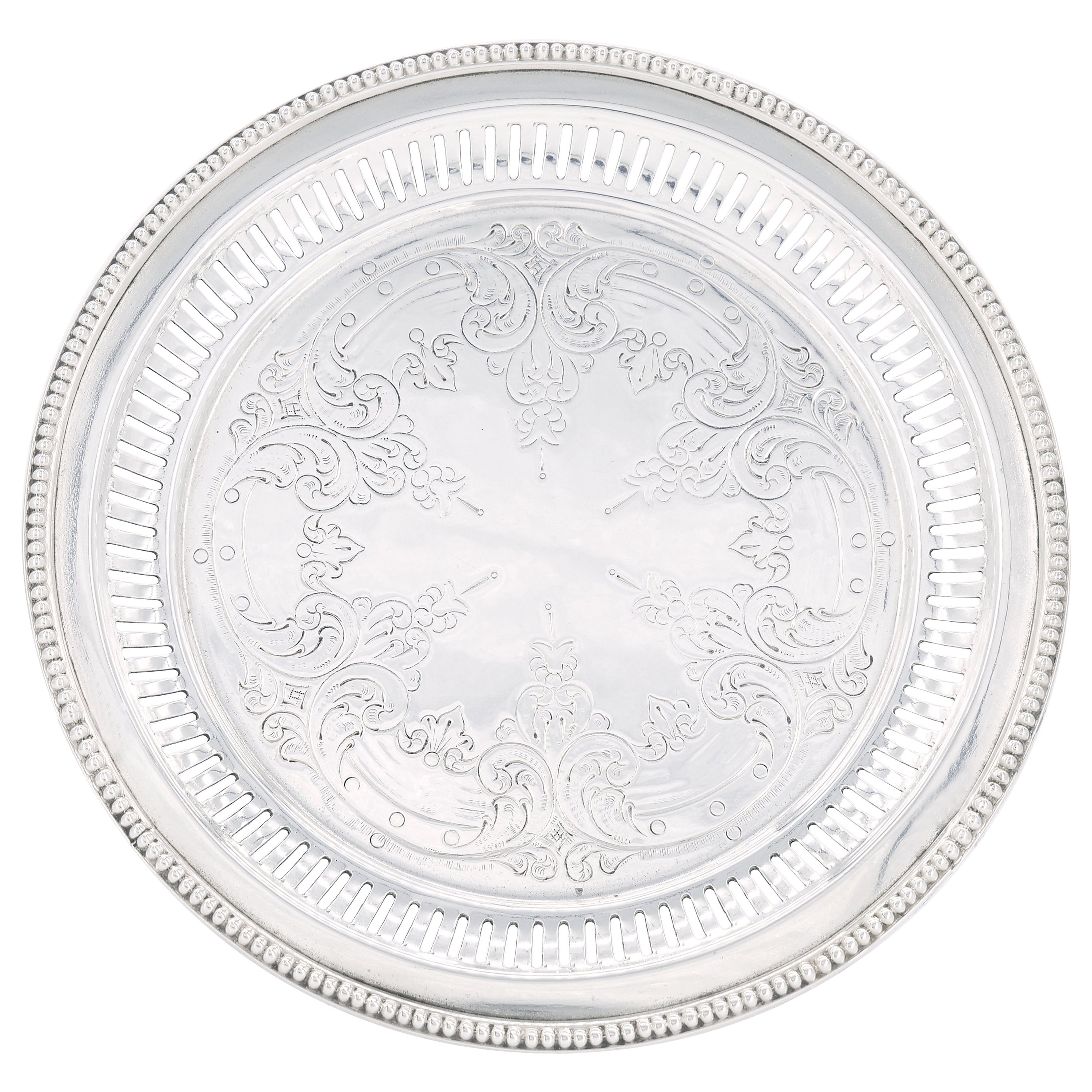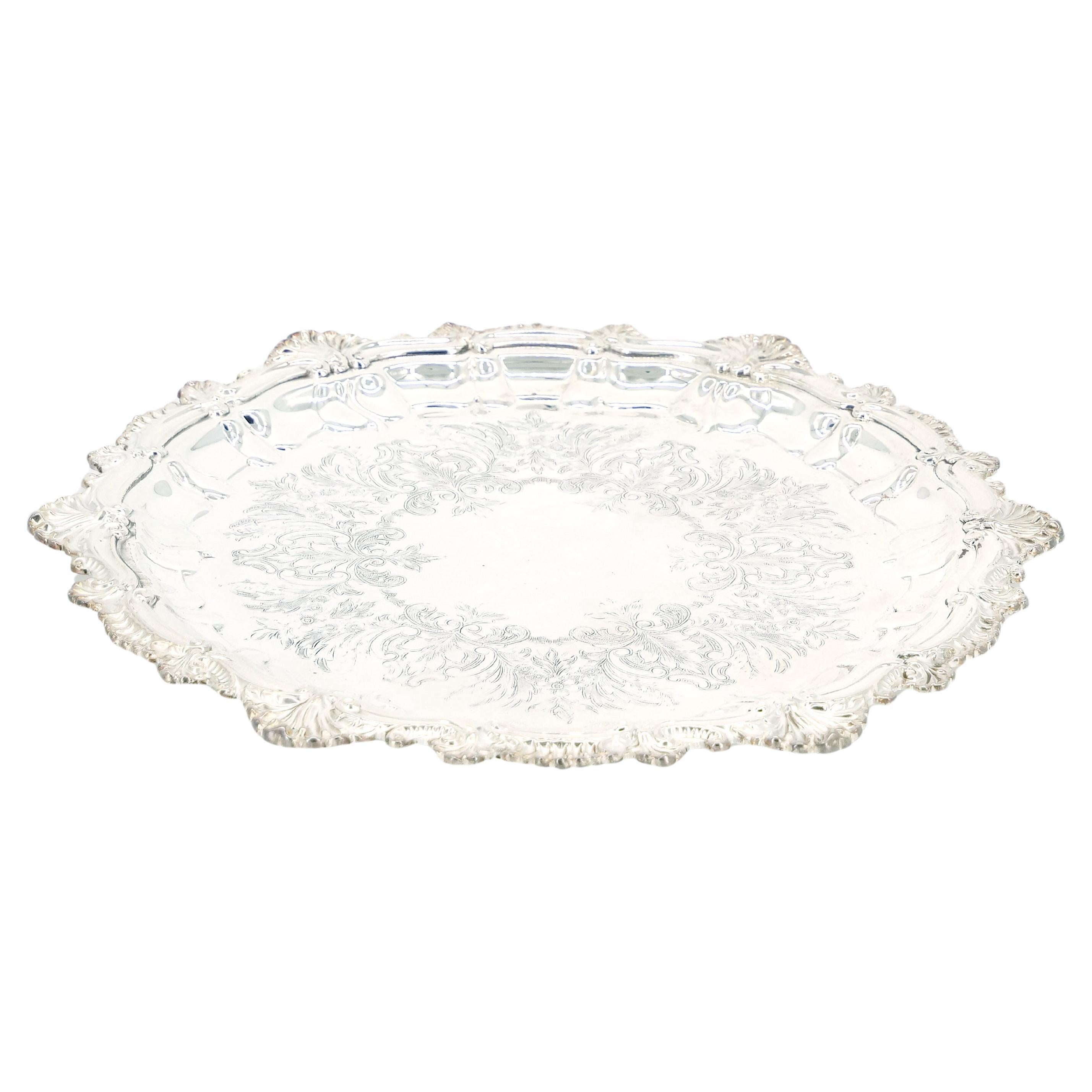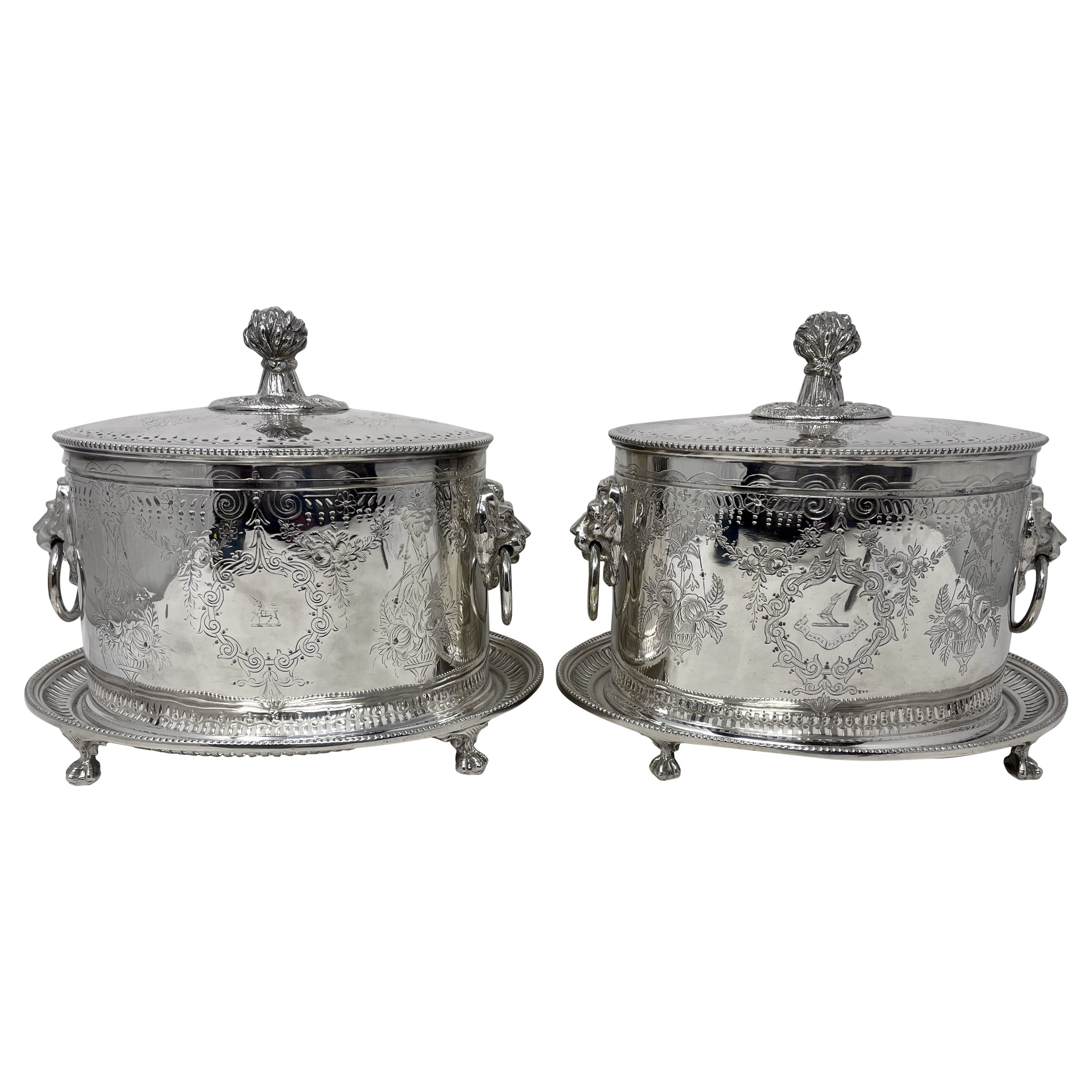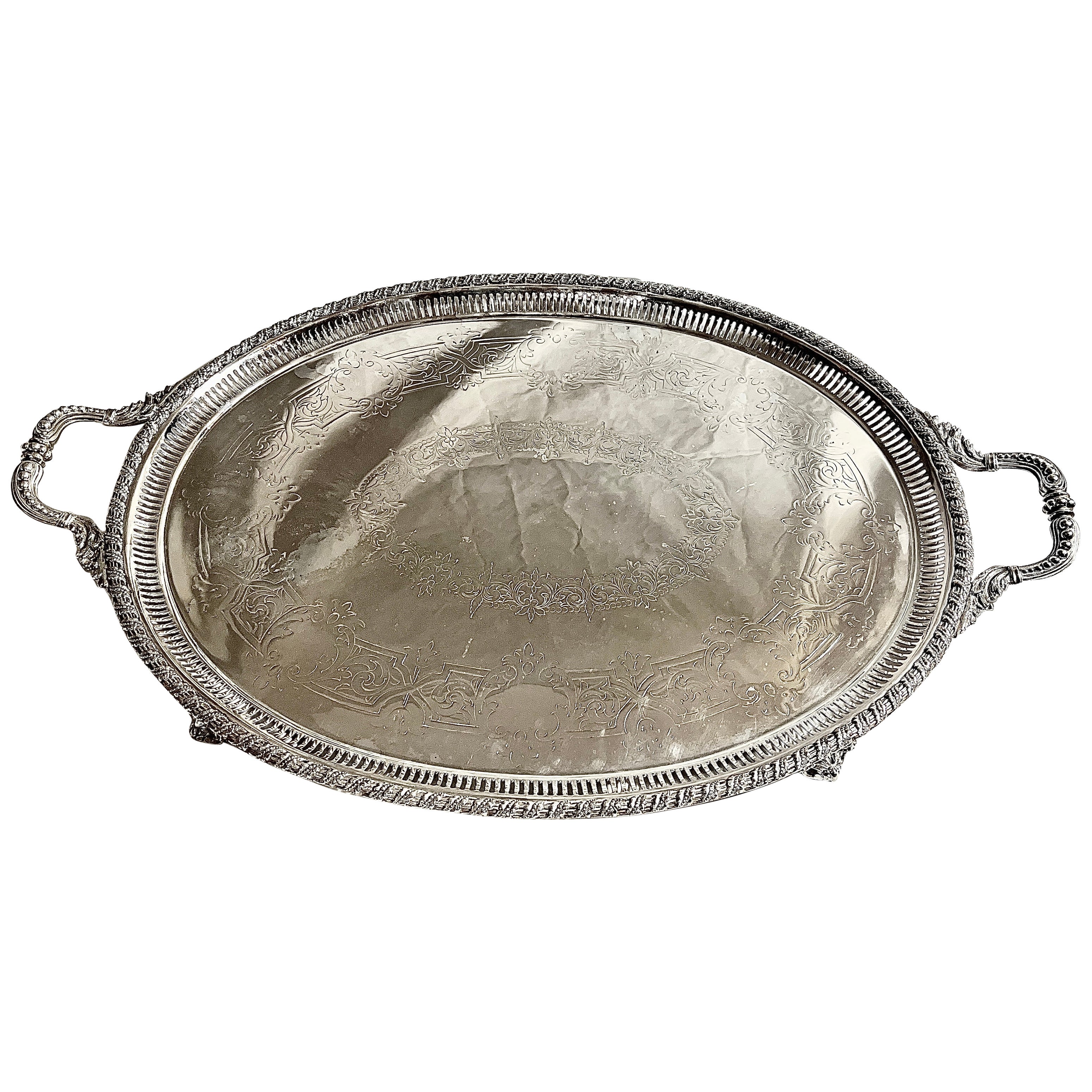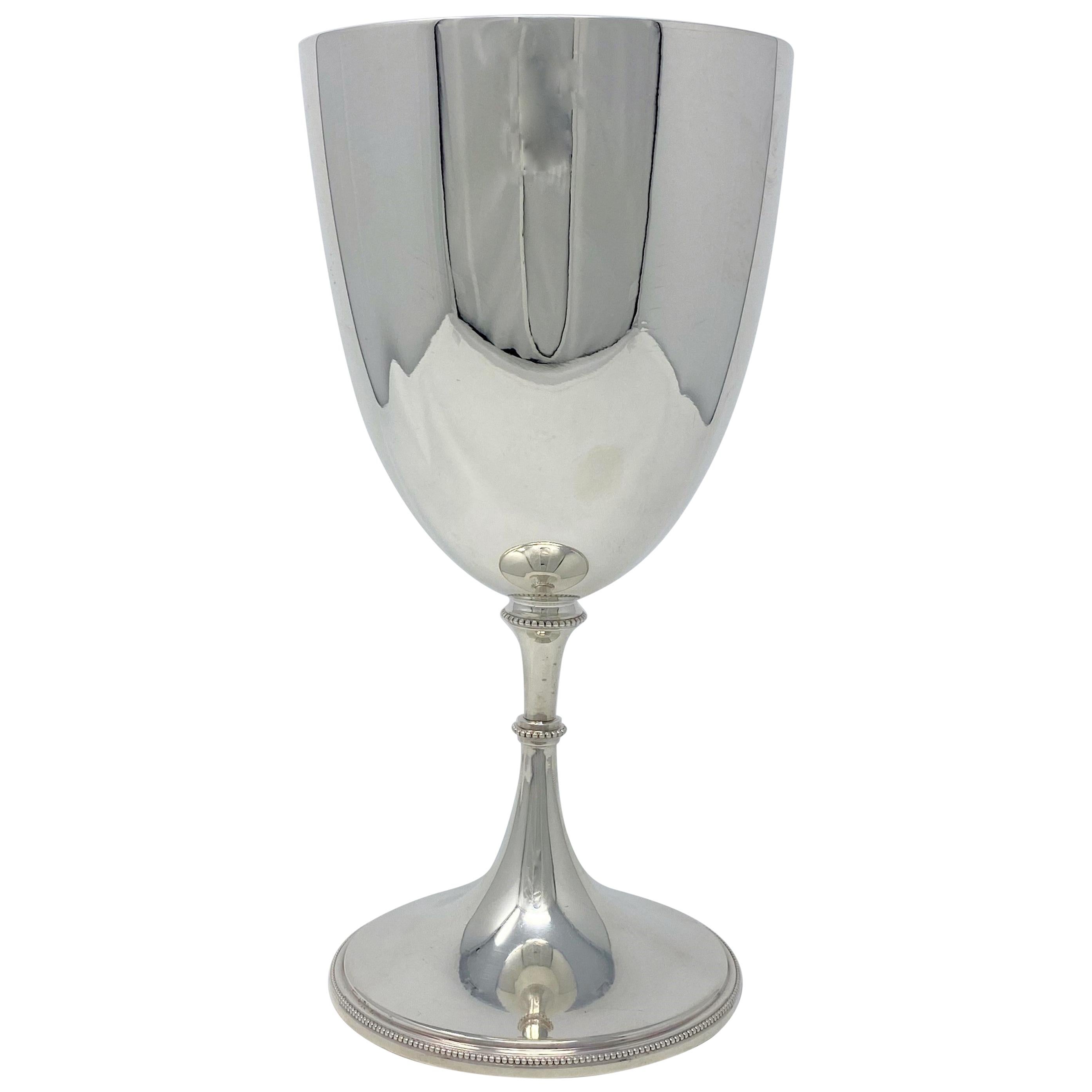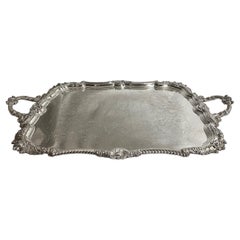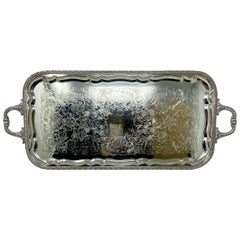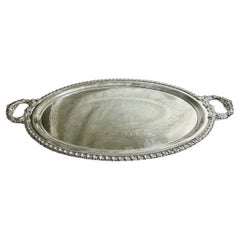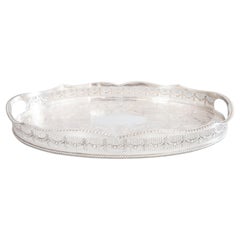
Antique English Sheffield Silver Plate Drinks Tray, Circa 1900.
View Similar Items
Want more images or videos?
Request additional images or videos from the seller
1 of 6
Antique English Sheffield Silver Plate Drinks Tray, Circa 1900.
About the Item
- Dimensions:Height: 1.5 in (3.81 cm)Width: 23 in (58.42 cm)Depth: 8.25 in (20.96 cm)
- Materials and Techniques:
- Place of Origin:
- Period:
- Date of Manufacture:1900
- Condition:Wear consistent with age and use.
- Seller Location:New Orleans, LA
- Reference Number:Seller: SIL8311stDibs: LU2854336998802
About the Seller
4.7
Vetted Seller
These experienced sellers undergo a comprehensive evaluation by our team of in-house experts.
Established in 1899
1stDibs seller since 2017
267 sales on 1stDibs
Typical response time: 1 hour
More From This SellerView All
- Antique English Sheffield Silver Plated Tray, Circa 1890.Located in New Orleans, LAAntique English Sheffield Silver Plated Tray, Circa 1890.Category
Antique Late 19th Century English Sheffield and Silverplate
MaterialsSheffield Plate
- Antique English Sheffield Silver-Plate Rectangular Serving TrayLocated in New Orleans, LAAntique English Sheffield silver-plate rectangular serving tray.Category
Antique 19th Century English Sheffield and Silverplate
MaterialsSheffield Plate
- Antique English Sheffield Silver Plate Tray Signed "Mappin and Webb" Circa 1890.Located in New Orleans, LAAntique English Sheffield Silver Plate Tray Signed "Mappin and Webb" Circa 1890. With lovely Greek Key Engraving.Category
Antique Late 19th Century English Sheffield and Silverplate
MaterialsSilver Plate
- Antique English Sheffield Silver Footed Openwork Tray, Circa 1890.Located in New Orleans, LAAntique English Sheffield Silver Footed Openwork Tray, Circa 1890.Category
Antique Late 19th Century English Sheffield and Silverplate
MaterialsSheffield Plate
- Pair Antique English Sheffield Silver-Plate Biscuit Boxes, Circa 1890'sLocated in New Orleans, LAPair antique English sheffield silver-plate biscuit boxes, circa 1890's.Category
Antique 19th Century English Sheffield and Silverplate
MaterialsSheffield Plate
- Antique English Sheffield Silver Footed Tray with Openwork Edge, Circa 1890.Located in New Orleans, LAAntique English Sheffield Silver Footed Tray with Openwork Edge, Circa 1890.Category
Antique Late 19th Century English Sheffield and Silverplate
MaterialsSheffield Plate
You May Also Like
- 1900s English Crystal and Silver Plated Sheffield Inkwell on TrayLocated in Los Angeles, CA1900s English crystal and silver plated Sheffield inkwell on handled tray. The tray measurement is: Depth: 10 inches. Height: 2.75 inches. Width: 14 inches. The measurement below...Category
Antique Early 1900s European Inkwells
MaterialsCrystal, Silver Plate
- Edwardian English Sheffield Silver Plate Scalloped Gallery TrayLocated in Pearland, TXA fine antique early 20th-Century English silverplate footed gallery serving or barware tray with handles. Marked "Viners Made in Sheffield England" on reverse. This gorgeous tray is...Category
Early 20th Century English Edwardian Sheffield and Silverplate
MaterialsSilver Plate
- English Sheffield Silver Plate Round Shape / Engraved Serving TrayBy Sheffield Silver Co.Located in Tarry Town, NYEnhance your dining or bar experience with our exquisite Sheffield silver plate round shape footed serving tray. This elegant piece combines timeless craftsmanship with intricate i...Category
Antique Early 19th Century English Victorian Sheffield and Silverplate
MaterialsSilver Plate
- English Sheffield Silver Plate / Engraved Interior Round Serving TrayBy Sheffield Silver Co.Located in Tarry Town, NYIntroduce a touch of timeless elegance to your entertaining with this exquisite English Sheffield Silver Plate serving tray. The round shape is adorned with delicately engraved flora...Category
Mid-20th Century English Sheffield and Silverplate
MaterialsSilver Plate
- Hallmarked Silver Plated Keepsake Box, Sheffield, UK, circa 1900Located in Colorado Springs, COOffered is a stunning silver plated keepsake box dating to 1900, with associated hallmark. This small box includes a wooden interior with two slots and a blank square on top where initials could have been engraved. A well maintained, elegant piece, this antique silver box is an excellent addition to any silver or home decor collection. Trinket or keepsake boxes have taken on many forms since their first conception in ancient times. However their purpose remains the same; to store jewelry and other items precious to the owner. Originally, these boxes were used specifically for jewelry. These were in common use as early as 5000 BC in Ancient Egypt, when the majority of Egyptians, both male and female, wore jewelry. Boxes were used to keep these gemstone encrusted items safe. In Ancient Rome, jewelry was a status symbol. Rings and brooches were utilized to represent ones status in society. Again, boxes were needed for security and storage purposes. Finding early examples of these are quite rare. Victorian and Edwardian examples of trinket boxes are far more common. This is because owning jewellery was a luxury until the Victorian era- let alone possessing so much a box was needed to store it all. Fine jewelry and other items became available to the masses after the industrial revolution due to the reduction in production costs. This led to a demand for trinket boxes, which were much smaller than jewelry boxes and therefore better suited to the needs of the middle class who did not yet possess an abundance of jewelry. In Victorian households, collectables and other items of interested were also stashed inside these boxes. This is why they are known as trinket or keepsake boxes, rather than just jewelry boxes, although of course jewelry was also stored in them. Trinket boxes were produced in large numbers around this time. Many were lined with colored plush or velvet or rich wood. More elaborate designs had interior divisions and trays for rings and other pieces of jewellery. It was also common to see trinket boxes so small that they could only contain one item, such as a single ring. Ornate exteriors were created to reflect the value of the trinket boxes contents. The Edwardian era saw the introduction of new styles of trinket box. These included small circular or oblong boxes...Category
Antique Early 1900s English Art Deco Decorative Boxes
MaterialsSilver
$600 Sale Price20% Off - Hallmarked Silver Plated Keepsake Box, Sheffield, Uk, Circa 1900Located in Colorado Springs, COOffered is a stunning Sheffield silver keepsake box dating to 1900, with associated hallmark. This small box includes a clean interior and rounded corners. The box is free of names or initials, but would have been used to house keepsakes such as jewelry or cufflinks. A well maintained, elegant piece, this antique silver box is an excellent addition to any silver collection. Trinket or keepsake boxes have taken on many forms since their first conception in ancient times. However their purpose remains the same; to store jewelry and other items precious to the owner. Originally, these boxes were used specifically for jewelry. These were in common use as early as 5000 BC in Ancient Egypt, when the majority of Egyptians, both male and female, wore jewelry. Boxes were used to keep these gemstone encrusted items safe. In Ancient Rome, jewelry was a status symbol. Rings and brooches were utilized to represent ones status in society. Again, boxes were needed for security and storage purposes. Finding early examples of these are quite rare. Victorian and Edwardian examples of trinket boxes are far more common. This is because owning jewellery was a luxury until the Victorian era- let alone possessing so much a box was needed to store it all. Fine jewelry and other items became available to the masses after the industrial revolution due to the reduction in production costs. This led to a demand for trinket boxes, which were much smaller than jewelry boxes and therefore better suited to the needs of the middle class who did not yet possess an abundance of jewelry. In Victorian households, collectables and other items of interested were also stashed inside these boxes. This is why they are known as trinket or keepsake boxes, rather than just jewelry boxes, although of course jewelry was also stored in them. Trinket boxes were produced in large numbers around this time. Many were lined with colored plush or velvet or rich wood. More elaborate designs had interior divisions and trays for rings and other pieces of jewellery. It was also common to see trinket boxes so small that they could only contain one item, such as a single ring. Ornate exteriors were created to reflect the value of the trinket boxes contents. The Edwardian era saw the introduction of new styles of trinket box. These included small circular or oblong boxes...Category
Antique Early 1900s British Art Deco Decorative Boxes
MaterialsSilver
Recently Viewed
View AllMore Ways To Browse
Epns A1
Roll Top Butter
Vintage Silver Plated Lazy Susan
Fidelio By Christofle
Gallia Dress
Malmaison Silverplate
Oneida Usa Silverplate
Richard Richardson Silver Plated
Sheffield Argentina
Sheffield Guns
Silverplate Coffee Urn
Vintage Silverplate Chafing Dish
Wm Rogers 1847
1847 Rogers Vintage Grape
Antique Silverplate Food Servers
Bollinger Champagne Vintage
Bollinger Vintage Champagne
Chippendale Tea Cart

